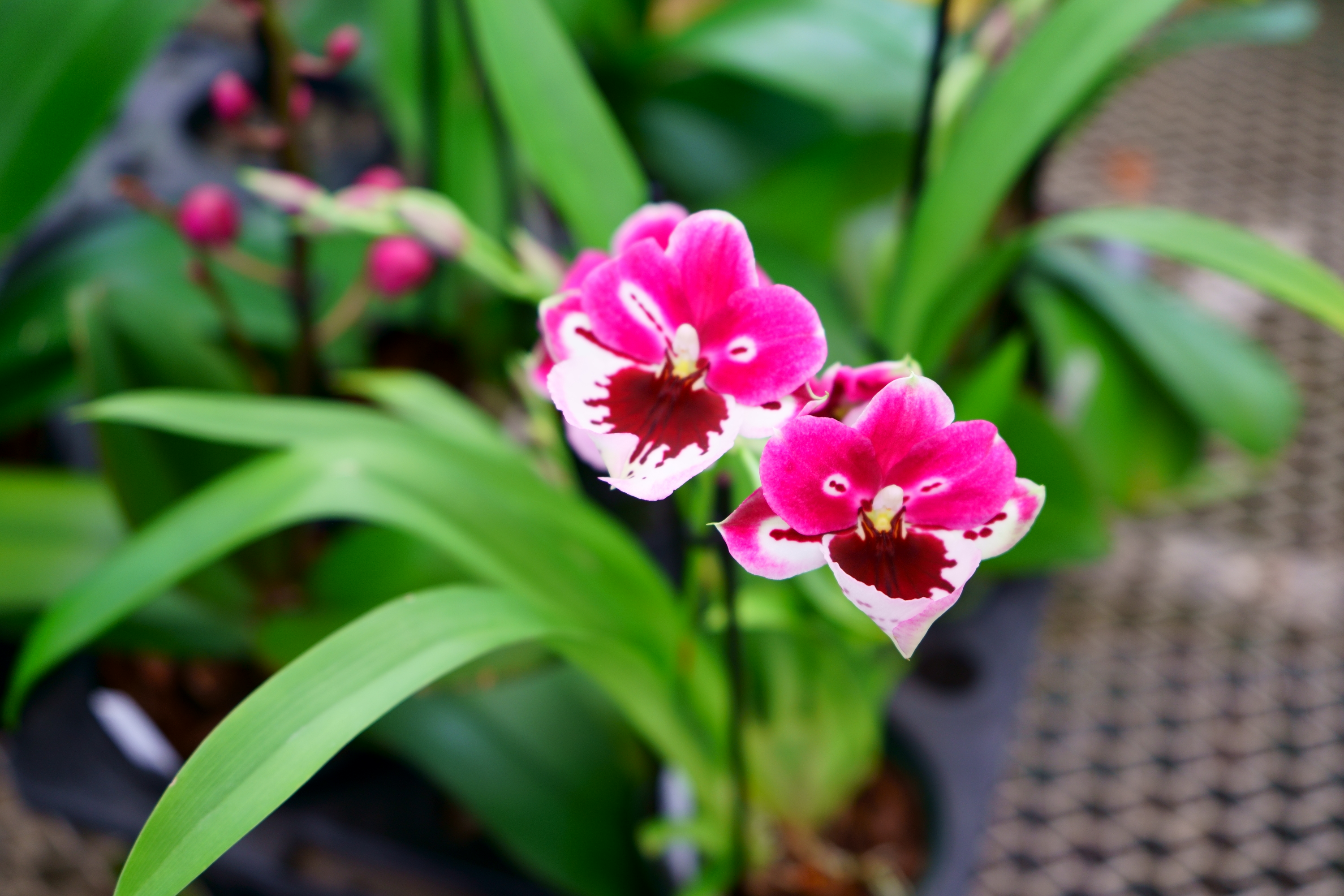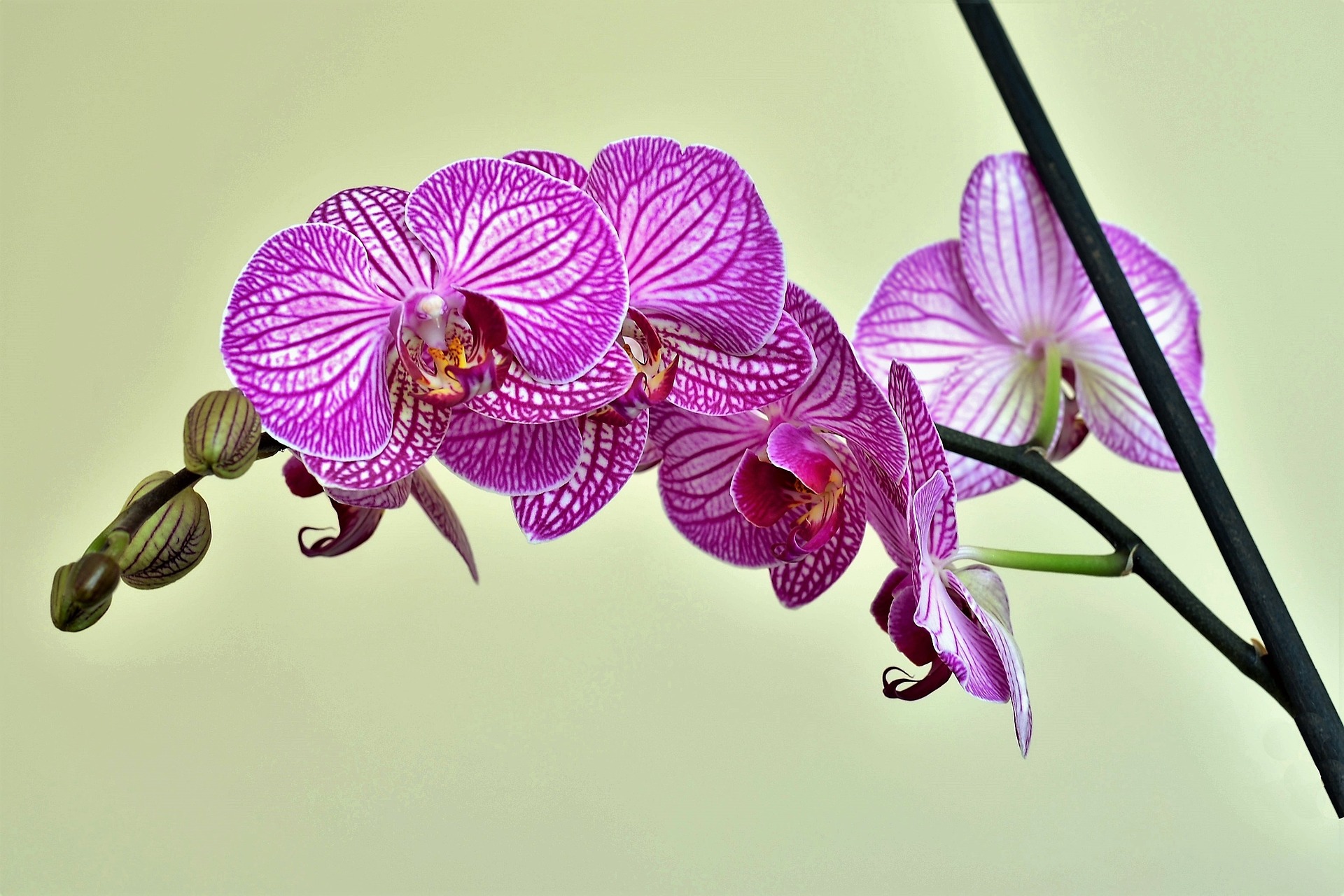- Home
- Fertilizing
- Orchid Food
Orchid Food
Orchids in their natural habitat receive their orchid food in minute quantities from raindrops dripping from the tree canopy. As the rain drips down through the leaves, it washes off bird and animal droppings, decaying leaves, and leached minerals to be absorbed by the orchid roots and leaves. One very important point to learn from this is that orchids do best with minute quantities of food more commonly referred to as fertilizer. A common mistake that beginning orchid growers make is to over water and to over fertilize. You can read more about how Heavenly Orchids recommends to fertilize on our Advanced Fertilizing page here.
Orchid Food Macro Nutrients
The three major orchid food macro nutrients are Nitrogen, Phosphorous, and Potassium, often abbreviated as NPK and form the numerical denotation that describes the percentage concentration of those nutrients contained in commercially available fertilizers. For example, a fertilizer with a denotation of 20-20-20 means that the fertilizing mix or solution contains 20% Nitrogen, 20% Phosphorous, and 20% Potassium. In addition to the 3 major macronutrients, there are three minor macronutrients that all orchids need to thrive. Those being, Calcium, Magnesium, and Sulphur, abbreviated as Ca, Mg, and S.

Macronutrient Role in Plant Growth
Each of the various orchid food nutrients have their role in plant growth, Nitrogen is needed for vigorous growth. One important note to make when choosing your orchid food fertilizer is to choose either the nitrate form (NO3) of nitrogen or the ammonium form (NH4). A third form of nitrogen is Urea based (COCNH) but Urea based fertilizer needs soil bacteria to break it down to be usable by the plant. Since the majority of cultivated orchids are epiphytes or air plants, they are not grown in soil, but rather in a grow medium such as orchid bark so there is no bacteria to optimize the nutrients. Phosphorous energizes rooting and flowering, Potassium contributes to the quality of the flowers and is a catalyst for carbohydrate production which produces the sugars that feed the plant. Calcium is needed for strong cell wall growth which results in stronger stems which in turn provides a stronger network to deliver all nutrients to the plant. Magnesium is essential for chlorophyll production. Sulfur also plays a role in chlorophyll production. A very good description of plant macronutrient roles can be found on this Harley Smith video here.
Orchid Food Micro Nutrients
Micro nutrients are also referred to as trace elements. Iron (FE) Manganese (MN) Copper (CU) Zinc (ZN) Boron (B) Chloride (CL) Molybdenum (MO) and Nickel (NI) are essential elements that all plants need. Iron, Copper, Manganese, and Zinc basically activate enzymes and conduct electricity in the plant which aids in chemical reactions and photosynthesis. An important note here is to pay attention to PH levels when giving your orchid food. At a PH above 6.5, Iron is not absorbed and at above 7.5 all other micronutrients are not absorbed. Boron aids with sugar transport, Chloride helps with photosynthesis, Molybdenum helps with nitrogen metabolism. You can learn more about PH requirements and fertilizing in general on our Fertilization pages.
Orchid Food Summary
Orchids are popular houseplants due to their striking, exotic appearance, and their varied and strikingly beautiful blooms. As with all plants, properly providing orchid food is essential to keep them healthy and to promote growth and flowering. This involves a careful balance of macro and micro nutrients, each of which plays a vital role in orchid growth and development.
In addition to the major macronutrients, orchids also require three minor macronutrients: Calcium, Magnesium, and Sulphur, which are abbreviated as Ca, Mg, and S. Calcium is particularly important for orchids, as it promotes strong cell wall growth and helps the plant to absorb other nutrients. Magnesium is essential for chlorophyll production, while Sulphur aids in the synthesis of amino acids. Also keep in mind to purchase non urea based fertilizer, that is why it is best to purchase fertilizer specifically made for orchids.
In addition to macronutrients, orchids require several micro or trace nutrients, including Iron, Manganese, Copper, Zinc, Boron, Chloride, Molybdenum, and Nickel. These nutrients are essential for various functions, such as activating enzymes and conducting electricity in the plant, aiding in chemical reactions and photosynthesis, and promoting sugar transport.
One important factor to keep in mind when fertilizing orchids is the pH level of the growing medium. Generally, orchids prefer a slightly acidic pH between 5.5 and 6.5. If the pH is too high or low, the plant may not be able to absorb certain nutrients, particularly Iron, which is not absorbed at a pH above 6.5.
When choosing an orchid fertilizer, it is important to select one that contains all the necessary macro and micro nutrients, and to apply it according to the manufacturer's instructions. Overfertilization can be harmful to orchids, leading to root burn and other problems. It is also important to avoid using tap water, which can contain minerals and chemicals that can harm the plant. Instead, it is recommended to use distilled or reverse osmosis water or rainwater.
Properly feeding orchids requires a careful balance of macro and micro nutrients, as well as attention to pH levels and watering. By providing the necessary nutrients in the right amounts, you can ensure healthy, thriving orchids with beautiful blooms for many years to come.


